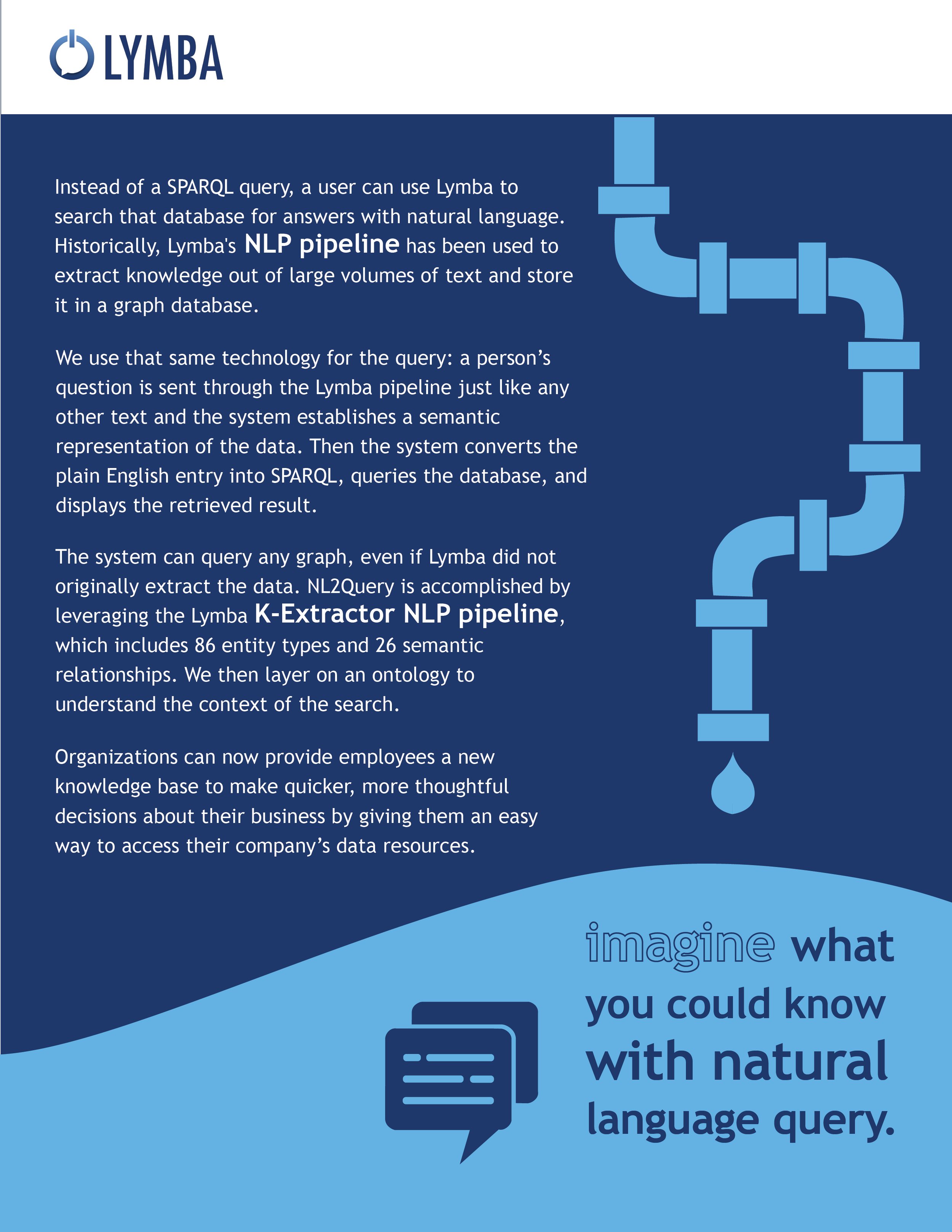NL2Query™
We want to lead our industry in tapping our own data resources because we believe it will help us understand our business and drive its success.
We have invested our resources in storing and connecting data in a graph database and I want an easy to use search tool that enables my employees to ask questions about that knowledge base.
Lymba NL2Query
In large organizations, graph databases are beginning to be used instead of relational databases for speedier performance and to find and set relationships among the data. This allows a company to rapidly expand how much it knows about its data and its business.
Traditionally, you need to know Sparql (or a graph querying language) in order to access the data and that skill is generally only held by a handful of people. This means that even though an expansive, flexible knowledge base can now be created, it will be hampered by how quickly it can roll out.
Now, use Lymba to search that database with natural language.
Instead of a Sparql query, a user can use Lymba to search that database with natural language. Historically, Lymba's NLP pipeline has been used to extract knowledge out of large volumes of text and converts it into a graph database store.
We use that same technology for the query: a search is sent through the Lymba pipeline just like any other text and the system establishes a semantic representation of the data. Then the system converts the search into a sparql query, queries the database, and displays the retrieved result.
The system can perform this on any data in the graph, even if Lymba did not originally extract the data. NL2Query is accomplished by leveraging the Lymba K-Extractor NLP pipeline, which includes 86 entity types and 26 semantic relationships. We then layer on an ontology to understand the context of the search.
Organizations can now provide employees a new knowledge base to make quicker, more thoughtful decisions about their business by giving them an easy way to access a graph database.
Imagine what you could know with natural language query


